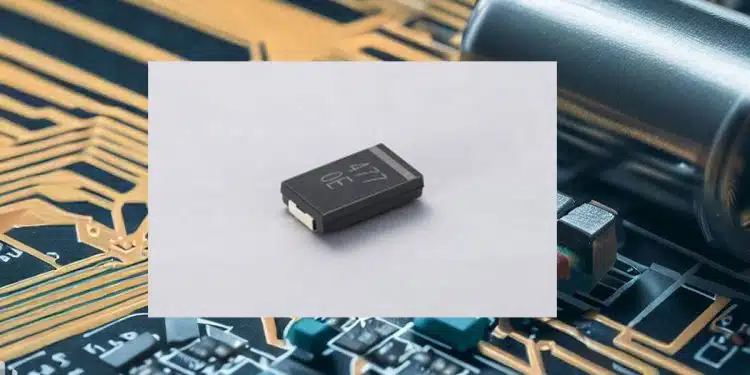Murata Manufacturing Co., Ltd. has developed a polymer aluminum electrolytic chip capacitor that achieves Murata’s largest capacitance (470 μF) in a D case (7.3 x 4.3 mm) with a maximum product height of 2.0 mm. Mass production of this capacitor will begin in June 2023.
In recent years, the high-speed processing of increasingly larger volumes of data has been necessary at data centers.
With this necessity, there is an increasing trend toward the implementation of not only high-performance networks and accelerators but also faster servers, which are the core equipment at data centers.
However, this equipment consumes a large amount of current, and there are two issues that must be managed for stable operation: IC voltage fluctuation and IC heat generation.
To solve these issues, it is necessary to both increase the capacitance of the capacitors used to suppress voltage fluctuations and to mount large, high-performance heat sinks (cooling units) on the ICs. Because conventional high-profile and high-capacitance capacitors placed near the IC would hit the heat sink, multiple low-profile yet low-capacitance capacitors are now arranged in a row for higher capacitance.
It is with this that Murata developed a low-profile, high-capacitance, and low-ESR polymer capacitor that does not hit the heat sinks and also helps lower the number of components required.
This capacitor not only reduces the amount of surface area required for mounting on electronic components, but also helps lower component costs. In addition, the miniaturization of the products allows for reductions in the materials used and energy consumption during processing, helping to reduce the products’ environmental impact.
Specifications
| Product name | ECASD40E477M006KA0 |
|---|---|
| Size (L x W x T) | 7.3×4.3×1.9mm(T2.0mmMax) |
| Rated voltage | 2.5Vdc |
| Capacitance | 470μF±20% |
| ESR | 6mΩ |





























